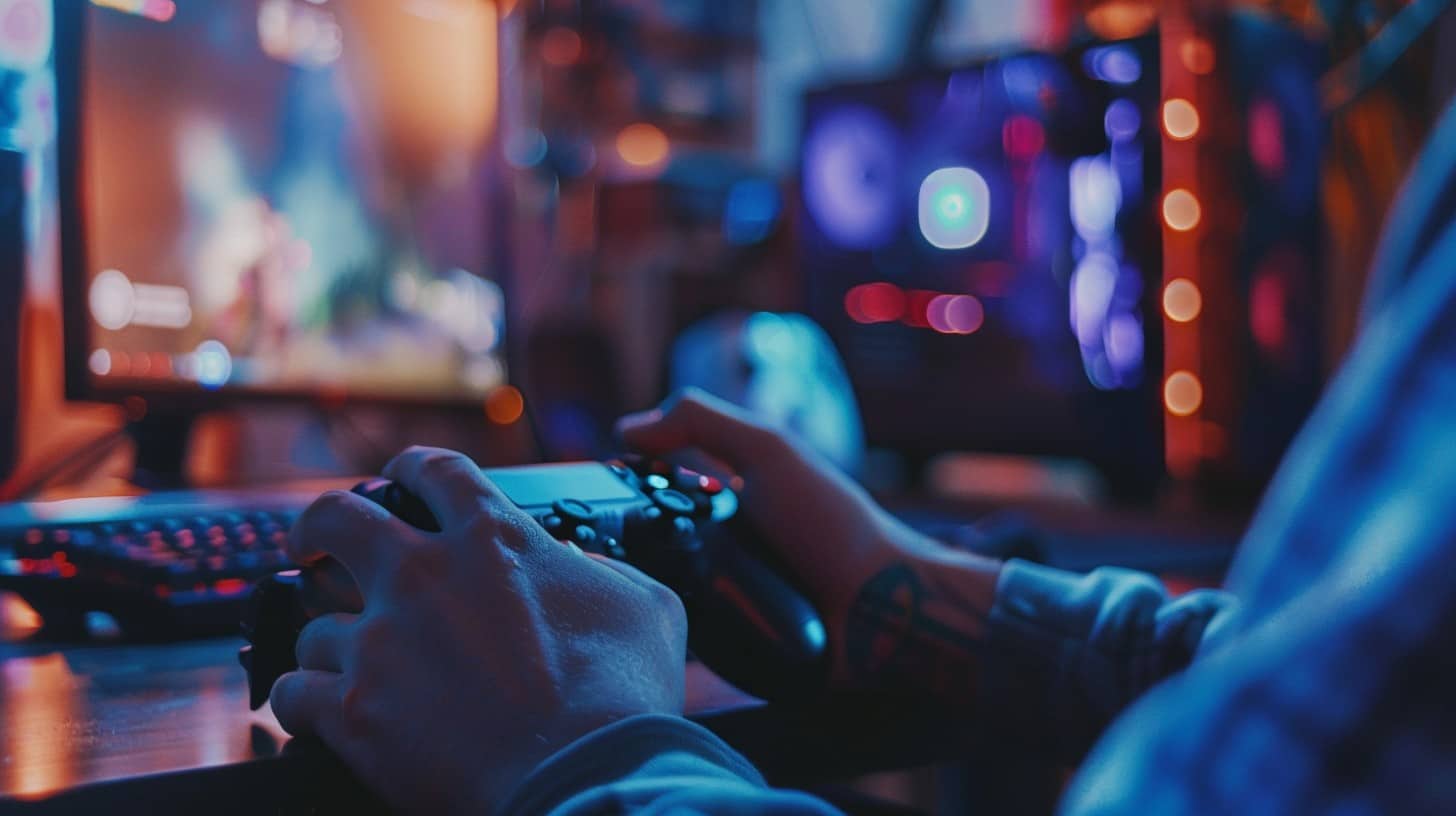You’re deep into a gaming session and your wrist starts to hurt. Surprise, surprise—it’s not just you. Gamer’s Thumb grabs most of the spotlight, but it turns out wrists have their battles too.
I’ll walk you through seven ways to keep those pesky pains at bay and stay in the game. And guess what? They actually work.
Key Takeaways
Taking regular breaks is key to preventing gaming injuries. These breaks should be about five minutes every hour to stretch, walk around, and give your muscles a well-needed rest.
Setting up your gaming area correctly can help avoid Gamer’s Wrist. Use chairs that support your back, keep screens at eye level, and use ergonomic keyboards and controllers.
Doing hand and wrist exercises strengthens muscles and prevents stiffness. Simple moves like the Fist to Fan Stretch or Wrist Rotations can make a big difference in keeping you in the game longer without pain.
Seeing a physical therapist or getting medical advice could speed up recovery from Gamer’s Wrist by nearly 50%. A professional can provide personalized exercises and treatments.
Using wrist supports or ergonomic equipment protects against repetitive strain injuries. These tools act as armor for your joints during long gaming sessions.
Table of Contents
Understanding Gamer’s Wrist
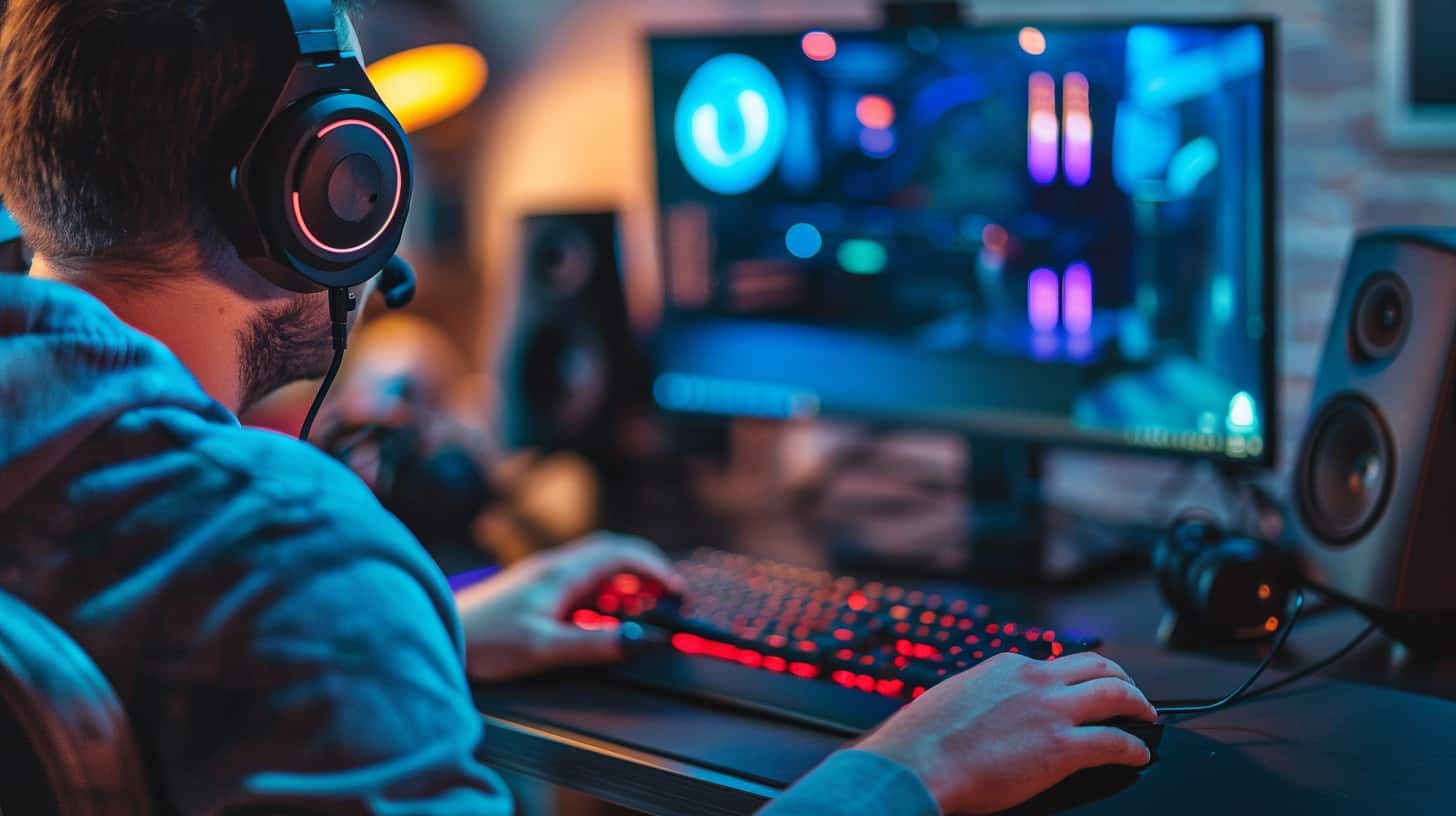
So you’ve been gaming hard, and your wrist is screaming “time out!” Gamer’s Wrist happens when we overwork those joints, making fast moves with a controller or mouse.
Definition and Symptoms
Gamer’s wrist is a sneaky foe lurking in the shadows, waiting to strike after those long nights of raids and battles. It’s all about that pain, stiffness, and sometimes even numbness creeping into your hand and forearm.
Ah, but it doesn’t stop there — you might find your grip weakening, making you drop your controller at the worst possible times.
Here’s where things get real — if your hands start feeling like they’re on a never-ending pins-and-needles show or if holding on to items feels like an epic quest of its own, you could be facing off against carpal tunnel syndrome.
These signs beg for attention; ignoring them won’t win this boss fight.
Difference Between Gamer’s Wrist and Gamer’s Thumb
So, you’ve got pain in your hand from too much gaming? It might be Gamer’s Thumb or Gamer’s Wrist. Here’s the scoop. Gamer’s Thumb happens because of swelling in the tendons of your thumb and wrist from doing the same thing over and over.
Picture using a game controller for hours; that’s usually the culprit. On the flip side, playing games with an outstretched palm can squeeze a nerve in your wrist, leading to what we call Gamer’s Wrist.
Risk factors play hide and seek with both conditions but in different ways. Age, whether you’re male or female, and being pregnant can make you more prone to getting Gamer’s Thumb.
For Gamers’ Wrist, things like your gender again, how your body is built, certain health issues (like arthritis), or even pregnancy can raise red flags – traffic signs warning you to take it easy on those marathon gaming sessions.
Keep an eye on these differences – knowing them could save you a ton of hurt down the line!
Common Injuries in Gaming
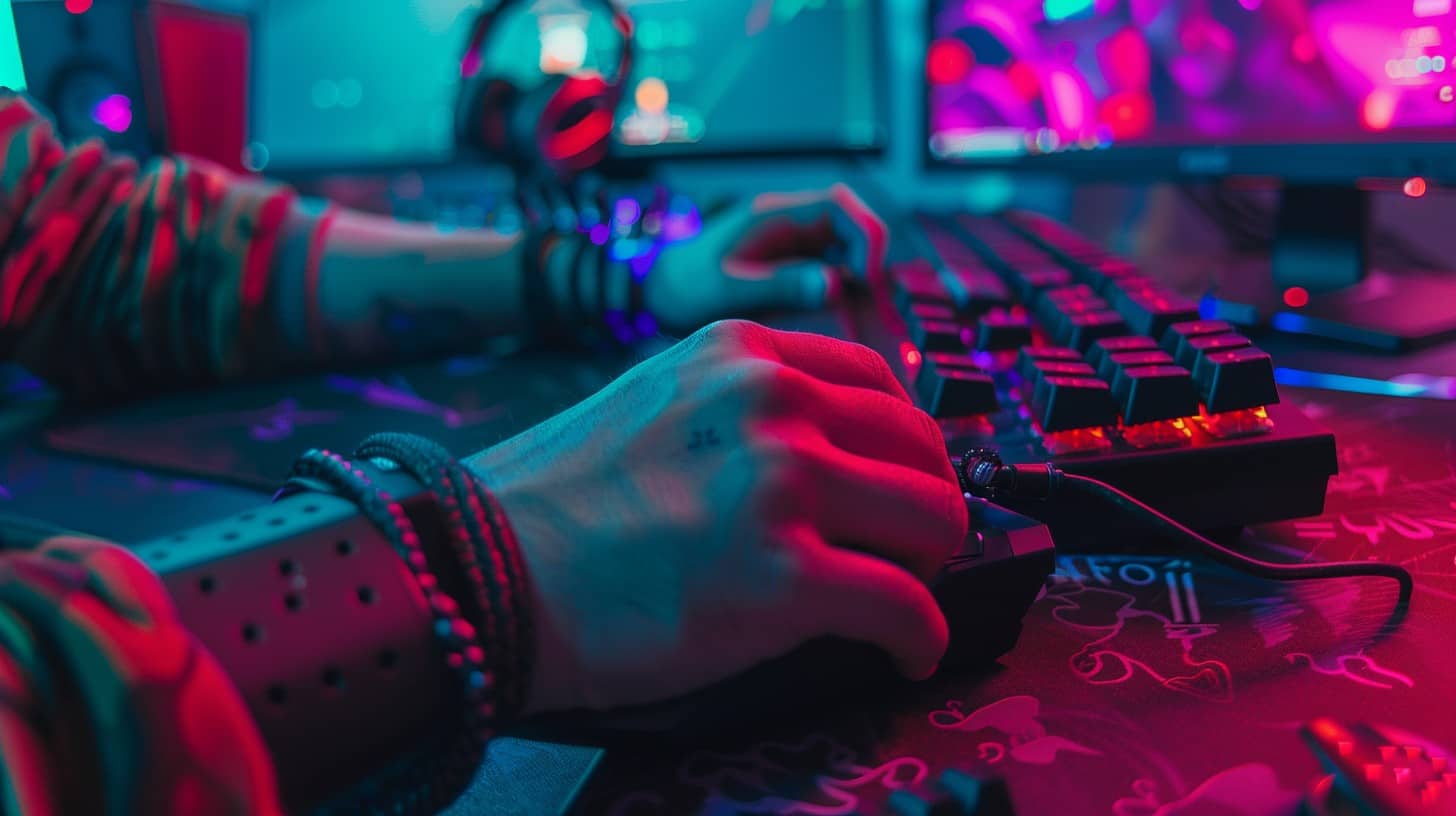
Gaming isn’t just fun and games; it comes with its own battle scars. From thumbs that ache like you’ve been thumb wrestling a bear, to wrists that feel like they’ve been doing gymnastics without the grace… injuries are part of the game.
Gamer’s Thumb
Gamer’s Thumb hits you where it hurts, making every click and joystick move a mission. Imagine your thumbs throbbing every time they dance across the gamepad. Ouch, right? This nuisance is all about the tendons in your wrist and thumb throwing a fit from too much gaming action.
They get swollen, angry, and make sure you feel their presence with each agonizing movement.
Now think about this — age doesn’t matter; whether you’re a teen in your prime or someone enjoying games into adulthood, Gamer’s Thumb can crash your party. Oddly enough, being male or female plays a role too; and if you’re expecting.
Well, let’s just say your gaming sessions might come with extra discomfort. Symptoms scream for attention: pain that camps out in your thumb travels to haunt your wrist and throws a curveball when trying to twist those areas away from the arm.
So next time you’re gearing up for an esports marathon or diving into virtual reality worlds, remember – those thumbs need love too!
Carpal Tunnel Syndrome
Carpal Tunnel Syndrome is like the boss level for gamers, but not the fun kind. It sneaks up on you when you least expect it. Hours of gripping your controller or keyboard with your wrist bent can press on your median nerve.
Picture that nerve as a highway and carpal tunnel as a traffic jam—no one’s going anywhere fast, and it hurts.
To beat this level, setting up your gaming station right is key. Think of ergonomic keyboards and chairs as power-ups to keep you in the game longer without pain. Sometimes though, even with the best setup, symptoms stick around like that annoying sidekick character in games.
That’s when physical therapy enters the scene—think of it as leveling up your health stats to get back into action sooner.
Tennis Elbow
Switching gears from the tight grip of carpal tunnel syndrome, let’s chat about another thorn in gamers’ sides: Tennis Elbow. Yeah, it sounds like something your uncle complains about after weekends spent pretending he’s the next big tennis star.
But here’s the kicker—it hits gamers hard, too. This pesky issue creeps up from overworking those forearm tendons, turning epic game nights into painful marathons.
So, how do you kick Tennis Elbow to the curb? It’s all about giving those arms a rest and treating them right with some TLC—think ice packs for cool relief and stretches that keep things limber.
Physical therapy is your best friend here, offering up exercises that build strength without overdoing it. And if you’re really feeling fancy – or desperate – trigger point dry needling might just be your secret weapon to get back in the game faster than ever before.
Repetitive Wrist Strain Injury
Gamers, let’s talk about a real pain in the wrist—repetitive wrist strain injury. This nagging issue turns up after too many hours of gaming without a break, making simple movements feel like lifting a heavy barbell.
It’s that dull ache or sharp sting you feel from moving your hand back and forth across the keyboard or controller one too many times. Your tendons and muscles get all worked up, leading to inflammation that just won’t quit.
This condition loves to sneak up on gamers who forget to mix things up with their gameplay style. Sticking to one game for too long is like eating the same meal every day—eventually, you’re going to get sick of it, or in this case, hurt by it.
To keep your wrists in top shape, shaking off those repetitive motions is key. Now let’s shift gears and look into causes behind the gamer’s wrist.
Causes of Gamer’s Wrist
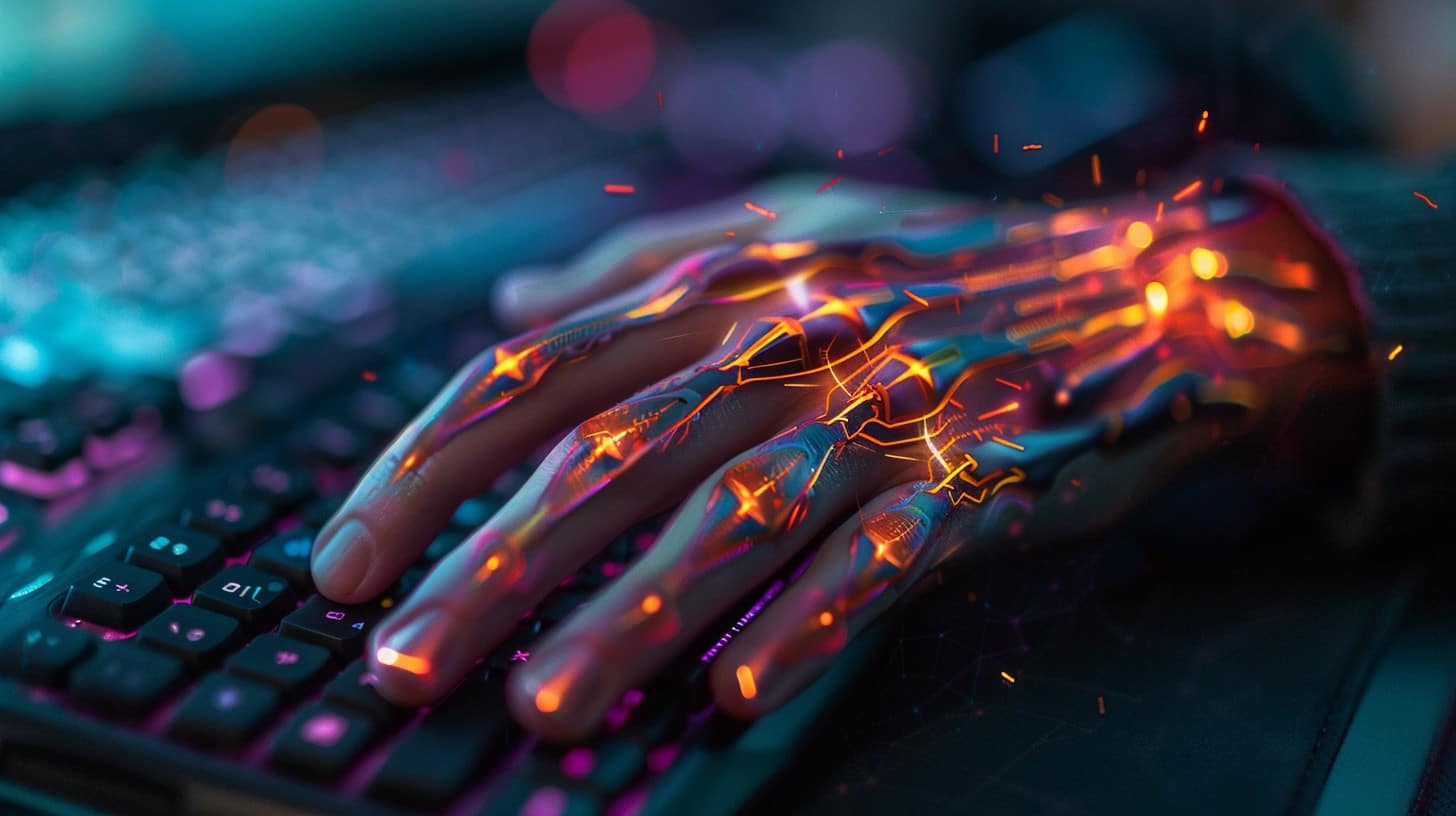
Playing the same game for hours can really do a number on your wrist. It’s all because of doing the same move over and over, and not sitting right while you’re at it. Dive in to learn more about how to keep gaming without the ouch!
Repetitive Motion
Doing the same movement over and over, like gripping a controller for hours, can lead to gamer’s wrist. This is because repetitive motion puts stress on your hand’s soft tissues and joints.
Think of it this way: if you keep bending a wire back and forth, eventually it’ll snap. Your wrist works in a similar fashion. Too much gaming without breaks strains your tendons and ligaments.
This strain doesn’t just stop at your wrist; it travels up to your elbow and shoulder too, leading to issues like carpal tunnel syndrome and tennis elbow. The big idea here is simple – mix things up! Use different controllers or switch hands occasionally to give those overused parts a rest.
Now, let’s dive into how incorrect positioning adds fuel to the fire.
Incorrect Positioning
Sitting like a pretzel for hours on end might seem cool, but trust me, your wrists won’t thank you. That slouchy posture and twisted wrist action? They’re the VIP tickets to pain city.
Your body isn’t designed to stay curled up or stretched out like a rubber band all day. You’ve got to give it some love with good positioning.
Imagine playing in an esports arena, where every second counts. You wouldn’t catch the pros lounging in their chairs like they’re at a backyard barbecue. Nope, they’re sitting up straight, screens at eye level, elbows and wrists supported—because how you sit is half the battle won against gamer’s thumb and overuse injuries.
It’s not just about looking professional; it’s about keeping those joints happy so you can keep smashing records without turning your gaming den into recovery central from carpal tunnel syndrome or repetitive strain injury flare-ups.
Treatment and Recovery for Gamer’s Wrist
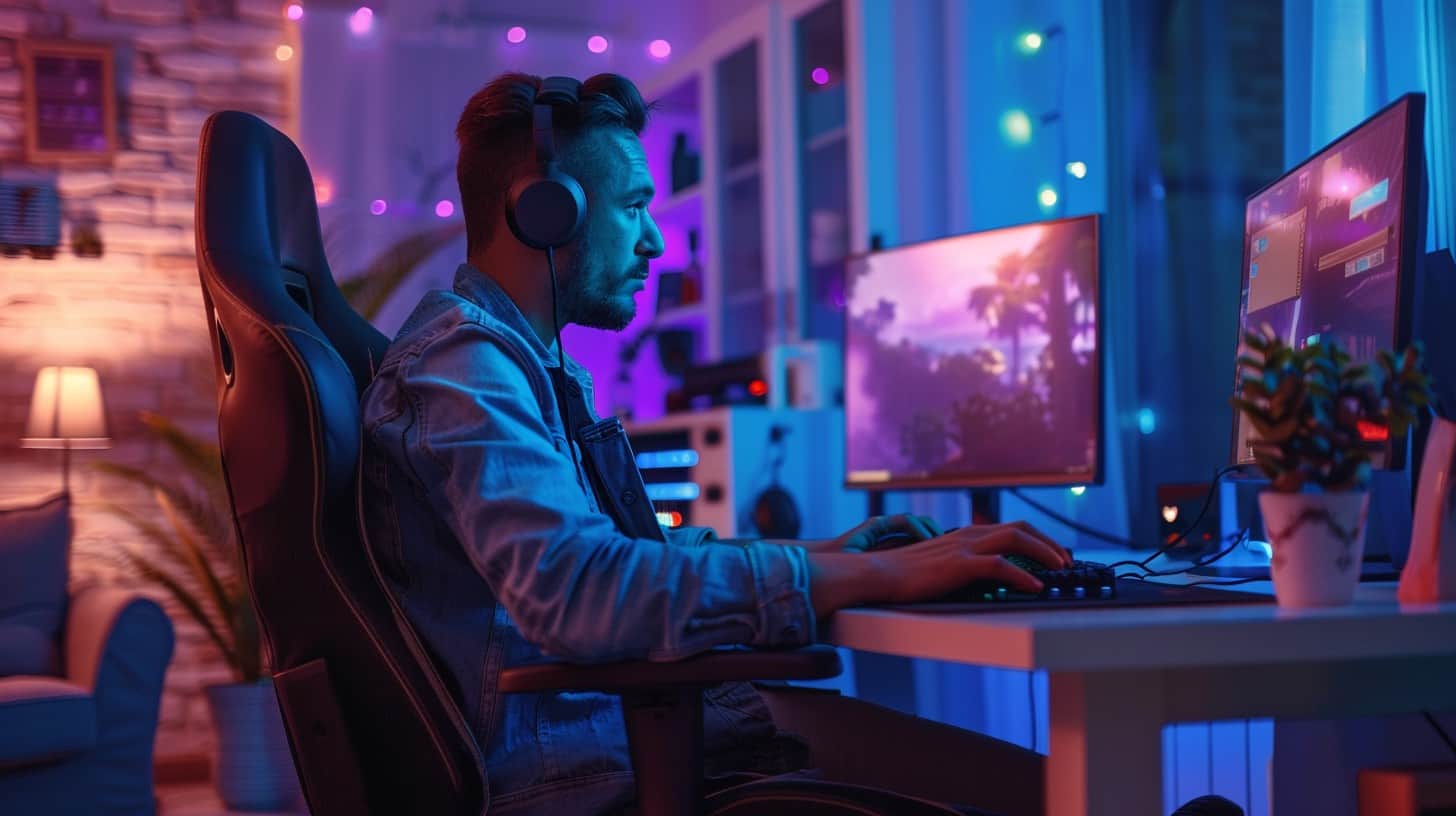
Fixing gamer’s wrist might include a visit to the doc, wearing a support band, or doing special moves that make your wrist stronger. There’s always a way back to gaming without the ouch.
Keep reading to find out how!
Medical Interventions
Getting on top of Gamer’s Wrist might mean seeing a pro. Yeah, doctors are in this game too. For starters, they might suggest physical therapy—think of it as leveling up your wrist health.
It’s like having a personal trainer but for your wrists. They show you moves and stretches that get you back in action. And guess what? No surgery needed if you play your cards right.
Here’s the kicker: I sometimes use a CBD product from Simple Leaf to dial down the discomfort. Doesn’t replace a doctor, but sure helps ease things along. Now, moving beyond just fixing the pain, let’s talk about keeping those injuries at bay with some smart habits and setups.
Physiotherapy
As we shift from looking at the medical side of things, let’s dive into physiotherapy. You’ve probably heard that it can work wonders for gamer’s thumb and even kick carpal tunnel syndrome to the curb without surgery.
Think of it as your personal body mechanic, tuning up those wrists and hands so you don’t have to hit pause on your gaming career. Physical therapy is like a gym session for your injured parts.
It strengthens them, stretches them out, and gets them back in game shape.
Now imagine doing exercises that specifically target your gaming injuries. Cool, right? Physical therapists whip out everything from ice packs to electronic stimulators to get you back in action.
They’ll even introduce trigger point dry needling if that’s what it takes – think acupuncture but with a mission. And the best part? You won’t be benched for long, since these methods are known to speed up recovery by nearly 50%.
So arm yourself with a good physical therapist and say goodbye to bench time and hello again to leaderboards.
Preventive Measures for Gaming Injuries
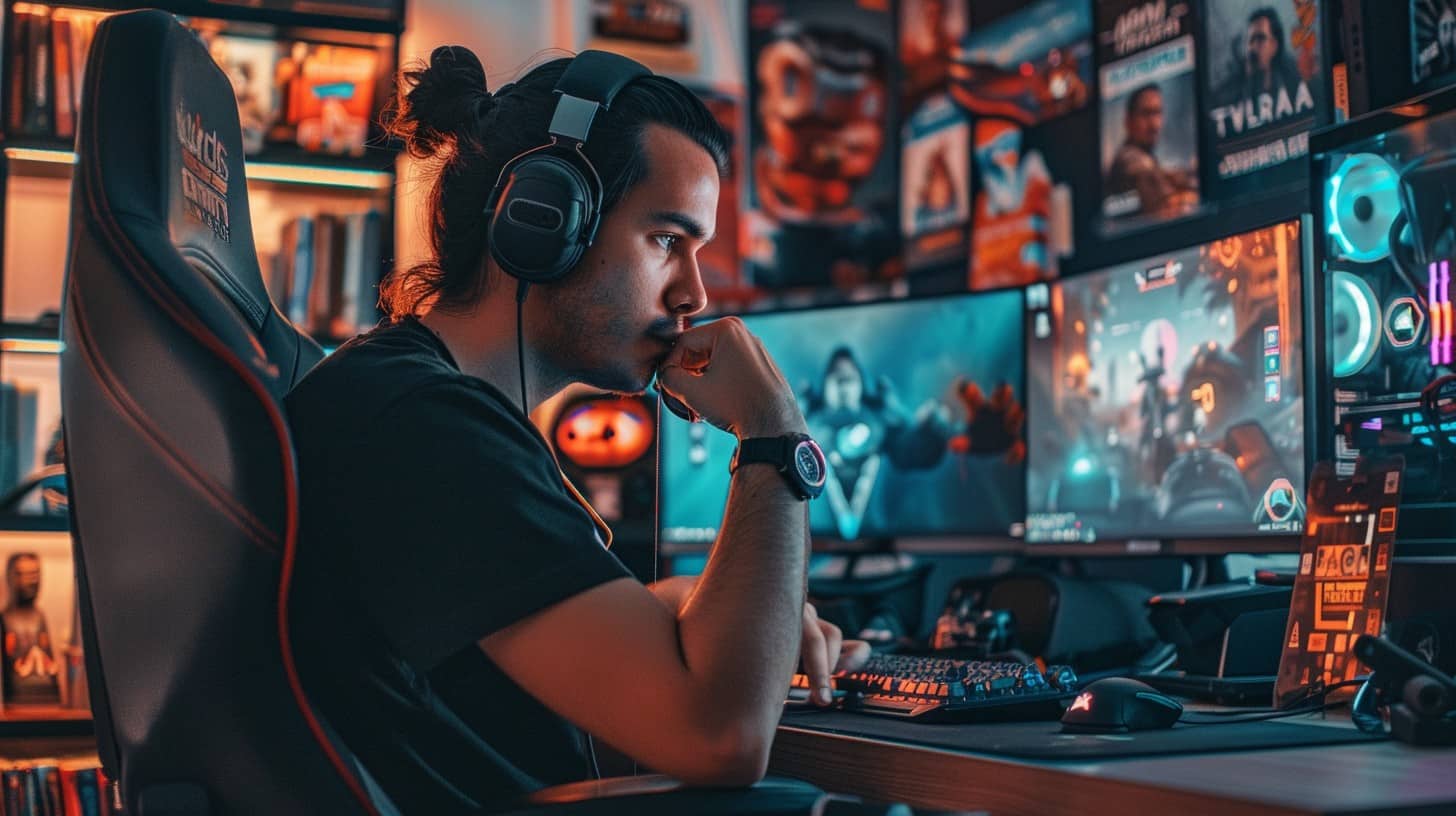
Keeping your gaming streak alive without the pain might sound like a boss level challenge, but it’s totally doable. Think of your body as your most crucial piece of gaming gear—taking care of it means you stay in the game longer.
So, let’s dodge those injury bullets with some smart moves!
First up, taking regular breaks is like hitting the pause button for your body—it needs that breather to keep going strong. And don’t just sit there during breaks; stretch it out or take a walk.
Your muscles will thank you.
Next, check out how you’re sitting and holding your controller or keyboard. An awkward pose can lead to all sorts of trouble down the line. Imagine setting up an epic battle station that’s also kind on your wrists and back; now that’s winning!
Grabbing some wrist supports might not be as exciting as getting a new game, but think of them as armor for your joints—they protect against those sneak-attack pains.
And here’s a no-brainer…
Regular Breaks
Taking breaks is like hitting the reset button for your body. Imagine you’re running a marathon, but instead of pushing through non-stop, you grab water and catch your breath every few miles.
That’s what your tendons and muscles need during gaming marathons – moments to recover and chill out. Built-in pauses aren’t just recommended; they’re a secret weapon against injuries from overuse.
Think of it as sneaking in cheat codes for your health right in the middle of an epic battle or quest.
Now, let’s get real about how often to press pause on that controller. You don’t want your game to crash right when you’re about to level up because you didn’t take care of yourself.
Experts suggest stepping away every hour — even if it’s just for five minutes to stretch or do some quick exercises. It keeps the blood flowing and prevents those pesky pins-and-needles feelings in your fingers and wrists.
Plus, getting up can be a good excuse to refill on snacks — bonus! This isn’t merely taking a break; it’s playing smart so you can keep venturing into those virtual worlds pain-free.
Proper Setup and Ergonomics
Taking regular breaks is vital, but so is how you set up your play space. A good setup isn’t just about looking cool; it’s about keeping those wrists safe. Think ergonomically designed chairs that keep your back straight and keyboards that don’t make you reach too far.
Position your screen at eye level to avoid neck strain, and choose a mouse or gamepad that fits snugly in your hand – no awkward gripping necessary.
Keep everything within easy reach to minimize stretching and twisting. Your arms should form a gentle angle while using the controller or keyboard, preventing unnecessary tension on your joints.
And let’s not forget feet flat on the ground – this supports your whole body, not just your gaming skills. Opt for peripherals designed with comfort in mind; they go a long way in preventing injuries related to overuse and ensuring longer, pain-free gaming sessions.
Hand and Wrist Exercises for Gamers
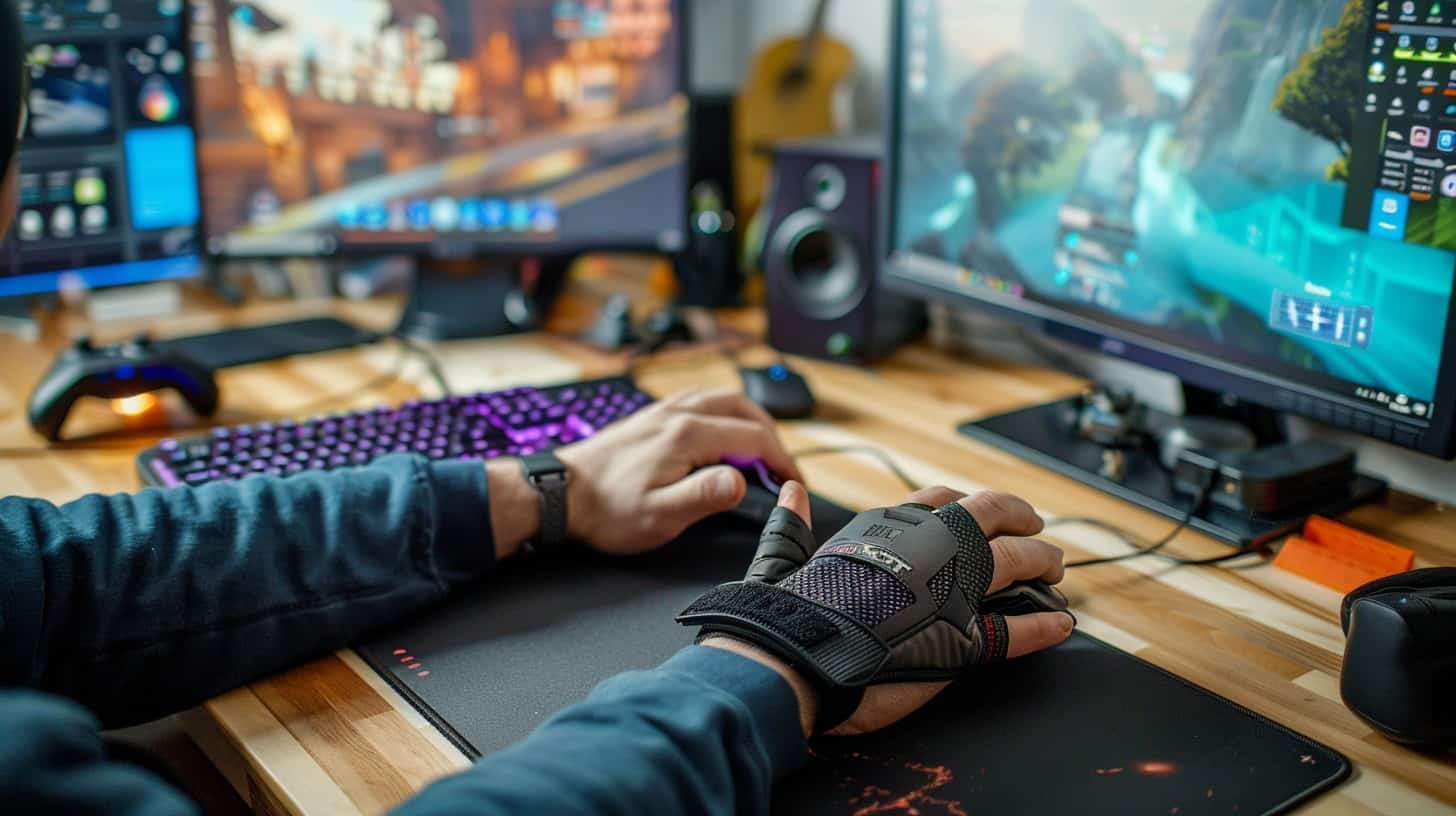
Hey gamers, keeping those hands and wrists in top shape is crucial if you want to keep playing without pain. Let’s dive into some exercises that can help prevent gamer’s thumb and other injuries.
- Fist to Fan Stretch: Start by making a tight fist. Now, fan out your fingers as wide as they can go. Repeat this 10 times to stretch those finger muscles and tendons.
- Wrist Rotations: Hold your arm out with the palm facing down. Gently rotate your wrist so that your palm faces up, then back down again. This movement gets the blood flowing and reduces stiffness.
- Thumb Touches: Touch the tip of each finger with your thumb, creating an “O” shape. Do this for both hands to improve flexibility in the thumbs—important for battling gamer’s thumb.
- The Shake Off: Imagine you’ve got water on your hands, and you’re trying to shake it off. This quick shake helps reduce tension from repetitive movements or staying in one position too long.
- Prayer Stretch: Put your palms together in front of you as if praying. Lower your hands while keeping them pressed together until you feel a stretch in your wrists and forearms.
- Spider Push-ups: Start by pressing the tips of your fingers from both hands against each other, like spiders mirroring each other climbing a wall. Push against each other, then relax—the perfect action for combating stiffness.
- Tabletop Wrist Flex: Resting your forearm on a table with hand hanging off the edge, gently bend your wrist upward, then downward using only your hand weight for resistance.
These simple yet effective exercises are like magic spells to keep injuries at bay and ensure you’re always game-ready!
FAQs About Gamers’ Wrist
What’s a gamer’s worst nightmare besides losing?
Believe it or not, it’s something called “gamer callus” and De Quervain’s syndrome – fancy names for wrist pain from playing too much. It happens when you’re overusing that joystick or keyboard.
Can eating too many snacks while gaming cause wrist pain?
While munching on snacks won’t directly give you wrist pain, conditions like obesity and diabetes can make things worse if you’re already on the path to an overuse injury.
How do I keep my wrists from screaming “Game Over”?
Before diving into your next epic gaming session, warm up those wrists! Think of them as athletes needing a good stretch before hitting the track. Also, take breaks and try some eccentric exercises to keep things flexible.
Is there a magic spell to cure gamer’s wrist?
No magic spells here, but treating your wrists right is key. If they start fussing, anti-inflammatories and massages can be real lifesavers. And yes, visiting a physician might not sound cool, but sometimes it’s necessary.
Do gamers need their own kind of physical therapy?
Absolutely! Occupational therapy isn’t just for folks with office jobs; gamers can benefit big time too. It helps manage symptoms and teaches how to game without straining those precious nerves in your hands.
Are there any secret gadgets or tools to prevent this dreaded gamer’s curse?
Secret gadgets? Maybe not so secret, but ergonomic controllers and keyboards are like treasure chests for preventing injuries like carpal tunnel syndrome or tendonitis caused by repetitive stress from marathon gaming sessions.
